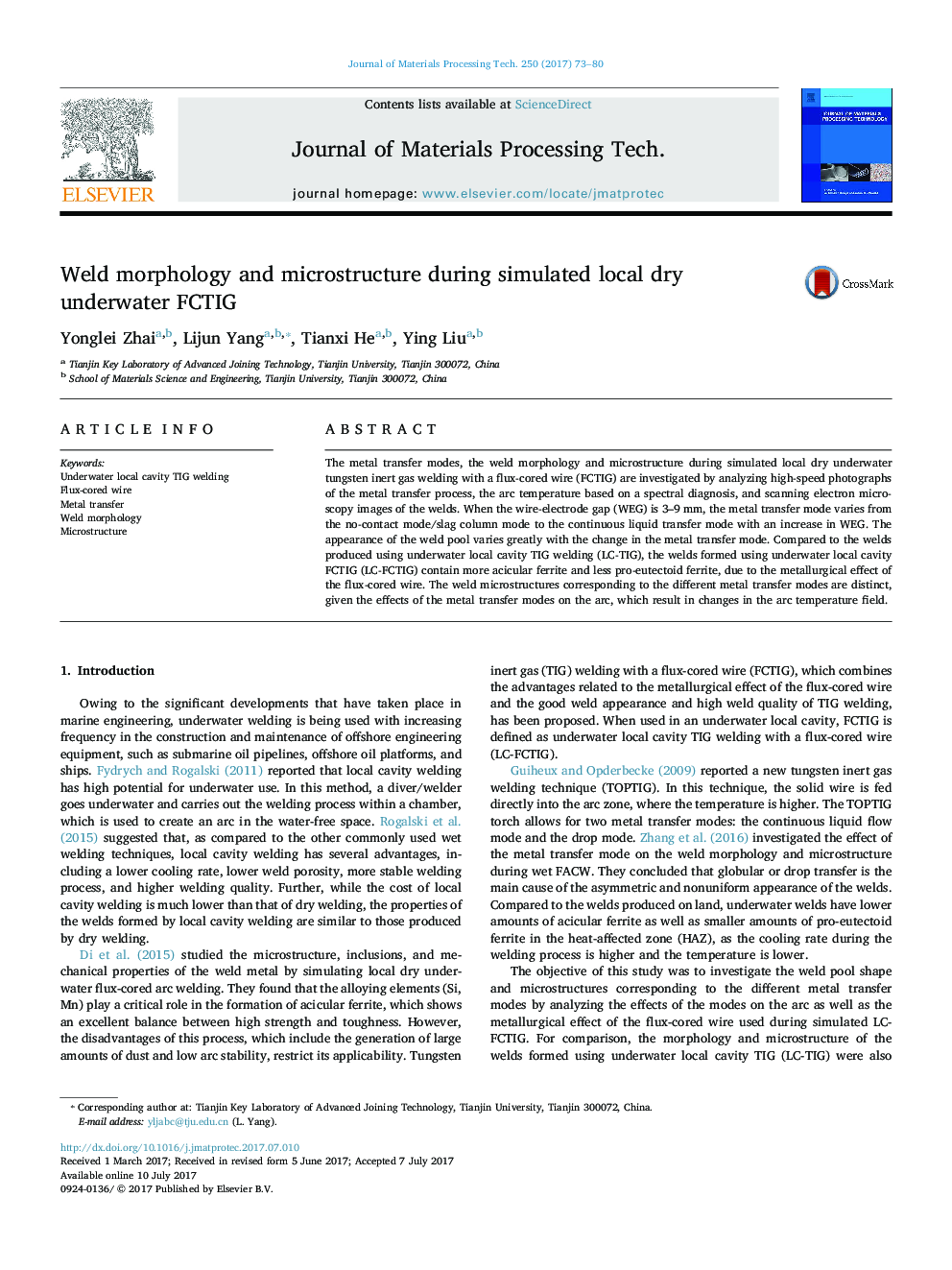| Article ID | Journal | Published Year | Pages | File Type |
|---|---|---|---|---|
| 5017666 | Journal of Materials Processing Technology | 2017 | 8 Pages |
Abstract
The metal transfer modes, the weld morphology and microstructure during simulated local dry underwater tungsten inert gas welding with a flux-cored wire (FCTIG) are investigated by analyzing high-speed photographs of the metal transfer process, the arc temperature based on a spectral diagnosis, and scanning electron microscopy images of the welds. When the wire-electrode gap (WEG) is 3-9Â mm, the metal transfer mode varies from the no-contact mode/slag column mode to the continuous liquid transfer mode with an increase in WEG. The appearance of the weld pool varies greatly with the change in the metal transfer mode. Compared to the welds produced using underwater local cavity TIG welding (LC-TIG), the welds formed using underwater local cavity FCTIG (LC-FCTIG) contain more acicular ferrite and less pro-eutectoid ferrite, due to the metallurgical effect of the flux-cored wire. The weld microstructures corresponding to the different metal transfer modes are distinct, given the effects of the metal transfer modes on the arc, which result in changes in the arc temperature field.
Related Topics
Physical Sciences and Engineering
Engineering
Industrial and Manufacturing Engineering
Authors
Yonglei Zhai, Lijun Yang, Tianxi He, Ying Liu,
